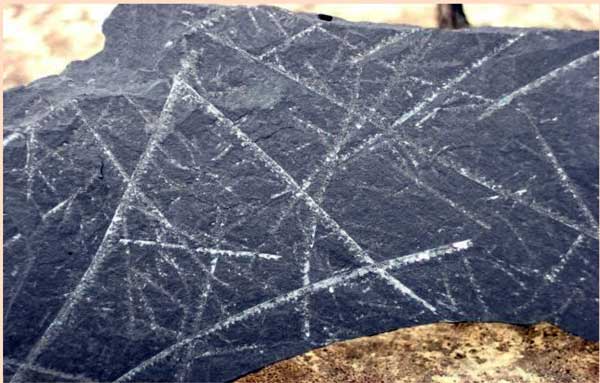Czech Graptolite Site
Globally important

Czech graptolites
Dirección
Czech
GPS
40.590846135009, -1.778355168563
Czech graptolites
The slates located in the vicinity of the La Tejera experimental area at Czech is home to the fossils of ancient organisms called graptolites which are not difficult to find. Graptolites were a small sea creatures that lived here about 430 million years ago. These organisms were very abundant in the Lower Palaeozoic oceans. Their fossils have come down to us as small brands grey, sawn shapes on the black slatesThe name of the name in Greek means precisely this: "the pencil". In fact, its name in Greek means just that: graptos=written, and lithos=stone.
Graptolites are extinct and there is no living thing equivalent to them today. They were planktonic marine creatures that lived in colonies floating in the sea. They are distantly related to vertebrates that had not yet made their appearance. In addition to 60 different species of graptolites (four of them new to science), fossils of other organisms have also been found at the Checa site. For all of these reasons, the Checa site has a international relevanceIt is visited by specialists from all over the world, generally within the framework of international congresses held in Spain.
The risk of loss of scientifically relevant specimens was very high and it was therefore decided to fence off the most important area The access to the site is restricted to scientific researchers only. Outside, in the vicinity of the fence, we can feel like scientists for a while, contemplating the number of these little creatures under our feet.
The best way to find out more about these little creatures and to get closer to this site is to follow the route that follows the Georuta 08, as it brings us closer to this and other stops, such as the Dropstone or the Aguaspeña de Czech.
